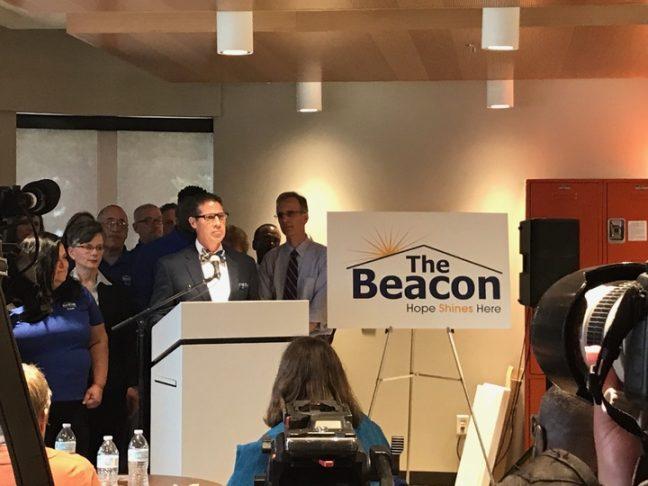A new beacon of light has emerged in the fight against homelessness in Madison. On Oct. 1, Catholic Charities opened a new homeless shelter at 615 E. Washington Ave, the former Greater Madison Chamber of Commerce building, named “The Beacon,” the aim of the facility, in both name and action, is to further, as Catholic Charities president Jackson Founder calls it, “a beautiful and hopeful message.” The complex can house more than 100 people and provides a variety of amenities to its residents, including health care services, family spaces, counseling and much more. It is open every day of the week for residents to use its resources.
Without question, “The Beacon” will make a huge dent in the fight against homelessness with the scope and magnitude of its operations. Both the local community and county will benefit considerably now that people have a better opportunity to get back on their feet, acquire new jobs and enjoy the dignity of their new lease on life.
That said, homelessness is an endemic problem, beyond the remedy of any single homeless shelter. The 2015 federal count of homeless people was greater than 6,000. Of these people, fewer than 38 percent live in either Madison or Milwaukee, meaning homelessness in the cities is just the tip of the iceberg.
However, the distribution of homelessness outside Wisconsin’s two largest cities is not entirely clear because the Department of Housing and Urban Development’s method of counting is wonky at best. HUD splits the state into four statistical regions: Dane County, Milwaukee County, Racine County and the remainder of the state.
Understanding homelessness in rural areas, small towns and suburbs are largely glossed over by HUD as it squeezes 69 counties into one statistical package. Additionally, there is legitimate doubt about HUD’s numbers. Joe Volk, executive director of the Wisconsin Coalition Against Homelessness, believes there could be over 20,000 homeless residents in the state. His conjecture is based off numbers from the Wisconsin Department of Public Instruction, whose most recent count of homeless student enrollment in Wisconsin was pegged at 18,592.
Per Volk, “The [HUD method is] primarily heavy on counting single adults. Many of us, including myself, don’t think it’s a very accurate picture.”
This ignorance effectively warps the very basis of political debate regarding homelessness because it distorts the numbers and erases the existence of homeless children.
Equally insulting is the amount of resources the state government devotes to combating homelessness. Only a small portion of the state’s allocated resources aimed at battling homelessness make it to their intended source.
That dollar amount has been stagnant for decades at $3.3 million, and there is no indication that it will rise. Comparatively speaking, Wisconsin bests Iowa’s abysmal mark of $1 million, but is totally dwarfed by Minnesota’s figure of $44.3 million. Despite the population totals of the two neighboring states being virtually equal, Minnesota spends more than $41 million more to combat homelessness than Wisconsin. It’s a marked division between two states whose population and demographics greatly mirror one another. In the Midwest, Minnesota is clearly the standard-bearer when it comes to homelessness policy and implementation. That’s a disgrace reflecting Wisconsin’s incapacity to take care of its people in their most vulnerable state.
Reform on the federal and state level is a requisite if we are to get the homelessness crisis fixed. HUD must be more complete and honest regarding the number of homeless people counted in their data. The state of Wisconsin must then make these people a priority for the first time. Most assuredly, homeless shelters, such as The Beacon, fulfill an integral role, but they alone are not enough. Only comprehensive efforts with sufficient resources, aimed at the explicit goal of eradicating homelessness will make a significant dent in this monumental issue.
More must be done because our moral compassion and conscience demands it of us. With proper action and determination, this city and state can shine a new beacon of light upon those doused in darkness, and give the homeless in our collective home a worthy reason to have hope.
Michael Sauer (mjsauer2@wisc.edu) is a freshman intending to major in political science.


